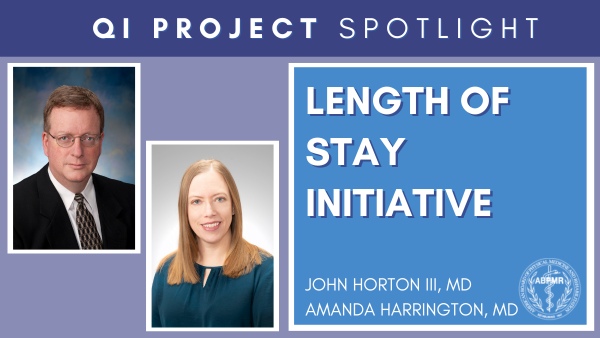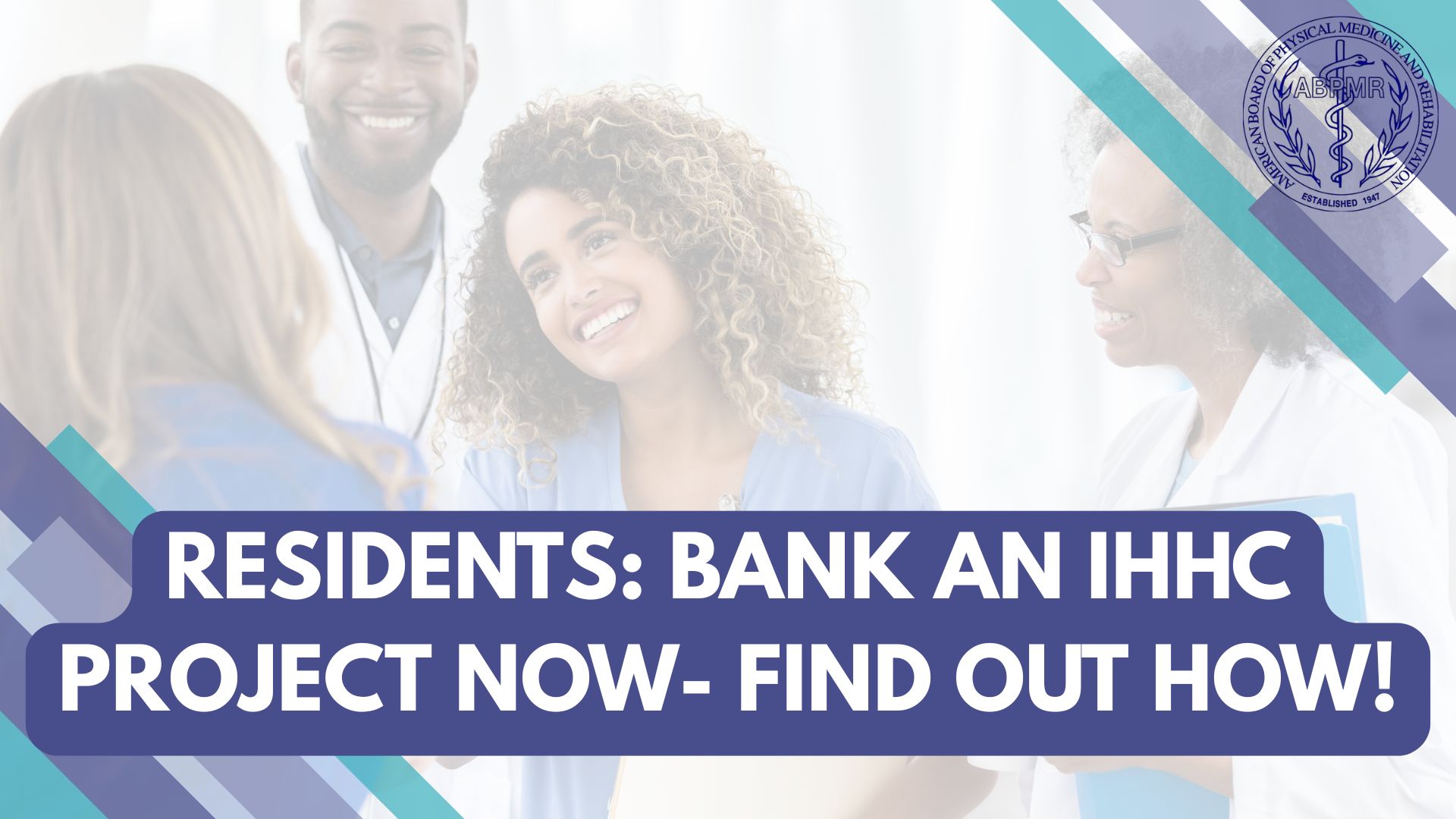CC
QI Spotlight: Length of Stay Initiative

This month our QI Project Spotlight was submitted by Amanda Harrington, MD and John Horton III, MD.
Dr. Harrington is an Assistant Professor in the University of Pittsburgh Department of Physical Medicine & Rehabilitation and program director of the ACGME accredited Spinal Cord Injury Medicine Fellowship at UPMC. She is the Director of Spinal Cord Injury Services at the UPMC Rehabilitation Institute and the Associate Program Director for the PM&R Residency Program. At the national level, Dr. Harrington serves as the co-chair of the Program Directors Council for Spinal Cord Injury Fellowships.
Dr. Horton is board certified in physical medicine and rehabilitation and spinal cord injury medicine. He is an assistant professor at the University of Pittsburgh School of Medicine. He was the first Director of Spinal Cord Injury Services at UPMC and subsequently founded the Spinal Cord Injury Fellowship program in 2001.
Thank you for submitting your project, Drs. Harrington and Horton!
The QI Project Spotlight is a periodic feature on the ABPMR News Center to highlight exemplary Quality Improvement projects submitted by your fellow diplomates (or residents) for continuing certification (CC) credit. Diplomates can use the QI Project Spotlight as a tool to plan their own QIs or as a way to connect with other diplomates doing similar work.

What is the problem you are trying to solve?
The observed (actual) length of stay is substantially longer than the estimated length of stay on our inpatient spinal cord injury rehabilitation unit.
What data (objective measurements) do you have that supports this as a problem?
We utilize an in-house management report to determine estimated length of stay for persons with spinal cord injury admitted to our inpatient rehabilitation unit. The estimated length of stay is determined based on impairment group code, etiologic diagnosis, comorbid conditions, and admission motor score. We noted that our observed (actual) length of stay was substantially higher than our estimated length of stay in the 6 months prior to initiating this project.
Baseline data for preceding 6 months: Month/ average expected length of stay (ELOS) in days / average observed length of stay (OLOS) in days: October 2022 / 20.05 / 23.84 November 2022 / 21.62 / 26.82 December 2022 / 17.36 / 20.93 January 2023 / 18.19/ 23.67 February 2023 / 19.90 / 23.30 March 2023 / 20.06 / 22.26
What is your opportunity statement? State the goal you hope to achieve.
Our goal is to reduce the average observed length of stay on the spinal cord injury inpatient rehabilitation unit without worsening other outcomes including rates of discharge to community, changes in self-care, and changes in functional mobility. Our goal is to implement a length of stay initiative on the unit with immediate changes to be observed over the subsequent 6 months.
What is the underlying cause of the performance/quality problem?
There are multiple factors that are likely contributing to our length of stay problem. Often, the initial data for estimated length of stay is not available to the team at the time of the initial team conference, thus a target discharge date is determined prior to having necessary data to help inform the length of stay decision.
The target discharge date is often communicated to patients and families soon after their initial team conference, and later modification of the initial discharge date has historically caused stress to patients and families. Thus, reluctance to change a target discharge date has been a barrier to reducing length of stay on the unit. In some cases, it is determined that a patient will need to discharge to a skilled nursing facility instead of to the community, however the target discharge date is rarely modified when discharge disposition changes. In some cases, extending the length of stay is in the best interests of the patient, and the team has historically extended length of stay beyond an initial target discharge date by weekly intervals.

What change(s) did you implement?
We implemented a length of stay initiative on our inpatient rehabilitation unit through a team education session. By making all team members (physicians, nurses, therapists, and discharge case managers) aware of the problem, it was easy to implement specific strategies to combat the problem.
First, we decided not to select a target discharge date until our estimated length of stay data was available to review in team conference. We opted to utilize a temporary placeholder discharge date internally until the estimated length of stay data was available to review in team conference. The temporary discharge date was not immediately shared with the patient or family.
Secondly, we utilized the estimated length of stay data during our team conference in order to set a target discharge date which would be more reflective of expected outcomes. Next, when communicating the target discharge date to patients and families, we implemented a process of educating patients and families that the date may change if patient goals were achieved early, a plateau in function was observed, or if the discharge disposition changed to skilled nursing facility. If a patient decided to discharge to a skilled nursing facility rather than to the community, we decided to reduce inpatient rehabilitation length of stay by 3-7 days.
Finally, if deciding to extend a patient's length of stay beyond their target discharge date, we decided to modify length of stay by a few days rather than by an entire week.

Did you achieve your goal or target from your opportunity statement? What data do you have to support your conclusion?
Yes.
After completing our length of stay initiative education to the team, we began implementing the program in our practice. We tracked our results for 6 months and found we were able to reduce our average observed (actual) length of stay on our inpatient rehabilitation unit. A positive shift was noted in our run chart suggesting success of our project (M. Guo et al. PMR 11 (2019) 771-778.)
Updated data for subsequent 6 months: Month/ average expected length of stay (ELOS in days)/ average observed length of stay (OLOS) in days: April 2023 / 20.86 / 18.51 May 2023 / 17.84 / 18.35 June 2023 / 21.36 / 21.61 July 2023 / 20.87 / 20.62 August 2023 / 19.68 / 19.91 September 2023 / 20.64 / 19.43
Notably, during this 6-month time period our rate of discharge to the community did not decline and our change in self-care and change in functional mobility care set scores remained higher than the nation. Thus, reduction in length of stay did not have a negative impact on other important outcome measures on our unit.

How will you maintain the success of your project going forward?
In order to maintain the success of our project, we will complete unit re-education every 6 months.



